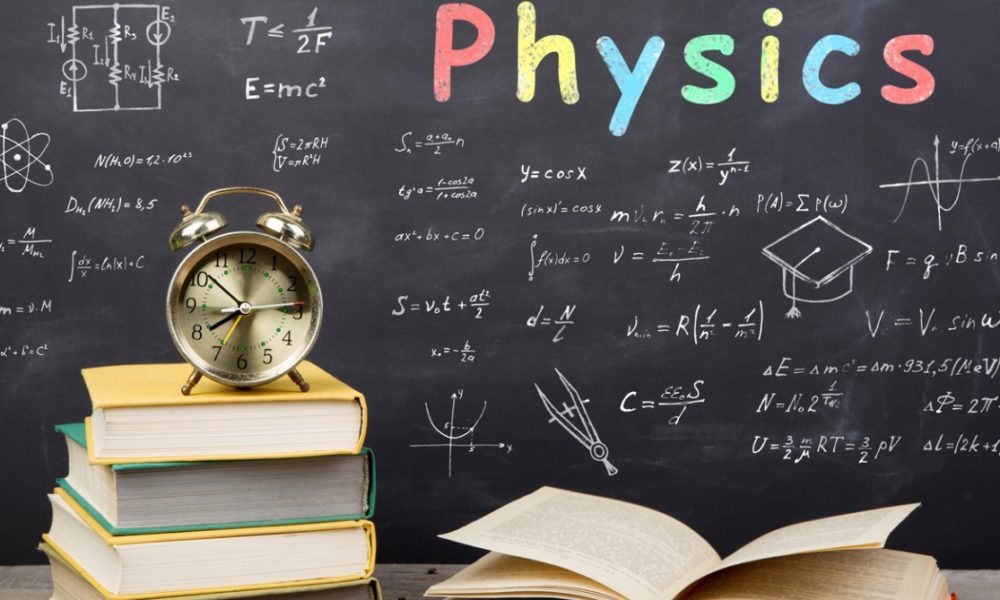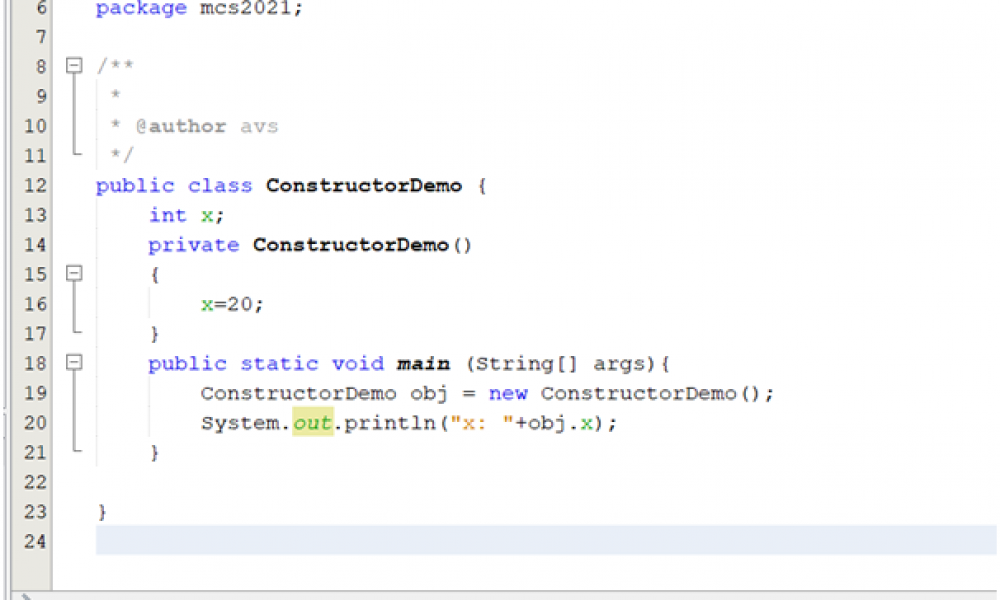Last Updated on by ICT Byte
BSc CSIT 1st Sem Old Questions – Physics are given Below as:
Subject: Physics
BSc.CSIT 1st Sem old questions – Physics Year: 2065
Section A:
Attempt any four questions:
- What is meant by Galilean invariance? Show that distance and acceleration are invariant
to Galilean transformation, velocity is not invariant. (2+1.5+1.5+2) - It is given that the potential energy of a system is rotationally invariant. What do you
mean by rotational invariance? Show that angular momentum is conserved for such a
system. (3.5+3) - (a) Discuss the analogy between liquid-flow and current-flow and hence, derive an
expression for liquid-flow through capillaries in series. (4)
(b) State Gauss’s law and use it to show that excess charge of a charged conductor resides
on its outer surface. (3) - (a)Discuss the analogy between liquid-flow and current-flow and hence, derive an
expression for liquid-flow through capillaries in series. (4)
(b)State Gauss’s law and use it to show that excess charge of a charged conductor resides
on its outer surface. (3) - Derive the expression for energy density in the magnetic field. (7)
- Explain the empirical basis for writing the Maxwell’s equations and write them. (7))
Section B:
Attempt any eight questions: - A proton is accelerated through a potential difference 50V and then it is allowed cross a
field free region 7.5m long. Find the time required to cross this distance. (4) - Find the height of geostationary satellite (as viewed by an observer on the earth’s
surface); given g=9.8 ms-2on the earth’s surface, R= 6.38 x 105m. (4) - The potential energy for the Vander Waals force between two atoms is given by
U(X) = , where x is the distance between the atoms and a and b are
positive constants. Calculate the force between the two atoms and plot it against x. (4) - A parallel LCR circuit has L= 8mH, C= 10 μF and R= 0,5Ω. Calculate the natural
frequency and quality factor. (4) - A water drop of radius 0.01 mm is falling through air neglecting the density of air as
compared to the water, calculate the terminal velocity of the drop ( ɳ for air = 1.8 x 10-4
CGS units) (4) - Two point charges of and – are located at the origin and at (a, 0, 0) respectively.
Find the point where electric field vanishes. (4) - Two parallel conducting plates are separated by the distance d and potential difference
ᐃψ. A dielectric slab of dielectric constant k is and of uniform thickness is tightly fitted
between the plates. Find the electric field in the dielectric. (4) - What is the capacitance of a capacitor that can store 800 J at 800 V? Suppose the
capacitor has parallel plates separated by 10-5 m and filed with a dielectric of dielectric
constant 2.2. What is the area of the plates? (4)
- Consider a simple RL circuit in which a sudden voltage V is applied. Discuss its transient
behavior and find the current as a function of time. (4) - Show that the time average power dissipation in a circuit which carries an AC current
. Here z is the impedance of the circuit:
BSC CSIT 1st Sem Old Questions – Physics Year : 2066
Section A:
Attempt any four questions:
- Write the law of conservation of momentum and the law of conservation of energy.
Write Galilean transformation. Show that the laws of conservation of momentum and
of conservation of energy are invariant under Galilean transformation. (2+1+4) - Write and explain Bernoulli’s theorem giving two practical examples. Deduce
Bernoulli’s equation. (1+2+2+2) - (a) Given the sum of external forces acting upon a system of particles equals zero, show
that the total angular momentum remains constant.
(b) Write Gauss’s law for a system of charges in a vacuum. Modify this law for the case
when some charges are in the medium of dielectric constant K. (1.5+2) - Derive the expression for energy density in an electric field. (7)
- Derive ∆x E→= _ − which constitutes one of Maxwell’s equations. (7)
Section B:
Attempt any eight questions:
- Calculate the magnitude of centripetal force acting on a mass 100g placed at a distance
0.2m from the center of a rotating disk with 200 rpm. (4) - Given g = 9.81 ms2 , radius of earth = 6.38 x 106 m and gravitational constant (G=6.6x 10-11 m 3 Kg s-2. Calculate the mass of the earth and time of revolution of a satellite in a circular orbit near the earth’s surface. (2+2)
- A charged particle moving along the x-axis enters a region in which a constant electric
field is along the y-axis and a constant magnetic field is along the z-axis. What is the
condition that the net force acting on the charge is zero? (4) - A particle in Simple Harmonic Motion. Show that the total energy of the particle is
constant. (4)
10.In an experiment with Poiseuille’s apparatus the volume of water coming out per
The second is 8 cm3 through a tube of length 0.62 m and of uniform radius 0.5 mm. The
the pressure difference between the two ends of the tube is equal to 3.1 cm of Hg. You can
use Poiseuille’s formula to calculate the coefficient of viscosity Q=πr
4p
8
ηl
(4)
- Two-point charges have charges q1= 2.0 x 10-8 C and q2=-0.7 x 10-8 C respectively. The
charges are placed 2 cm apart. Find force between the charges. (4) - An electron having kinetic energy 3.0 x 10-17 J enters a region of space containing a
uniform electric field E = 800 vm-1. The field is parallel to the electron’s velocity and decelerates it. How far does the electron travel before it comes to rest? (4)
- A straight metal wire of length l is moved in a magnetic field
B→ with velocity v →.Consider the Lorentz force acting electrons in the wire and show that the potential difference across the wire is
B →,l → ,v→(4) - A capacitor C, a resistor R, and a battery arc connected in series with a switch. The switch is closed at time t = 0. Set up the differential equation governing charge on the capacitor and find the charge as a function of time. (4)
- Calculate the energy density of uniform magnetic field of strength 1 Tesla in Vacuum
[μ0 = 4π × 10−7h/n]
BSC CSIT 1st Sem Old Questions – Physics – Year: 2067
Attempt all questions:
- A reference frame rotates with respect to another inertial reference frame with uniform
angular velocity w. The position, velocity, and acceleration of a particle in the inertial
frame of reference is r⃗ , v⃗⃗⃗ and a. Find the acceleration of the particle in the rotating
frame of reference. - Consider a system with potential energy U(r )
a. Show that force acting on the system is given by F (r ) = ∇ U(r ) .
b. For the system above it is given that U(r ) is translationally invariant i.e,
U(r⃗0 +r )=U(r°⃗ ). Show that the linear momentum of the system is conserved. (3.5 +3.5)
- a) State the assumptions made in deducing Stoke’s law for the motion of a small sphere
in a viscous medium. Use dimensional arguments to derive Stoke’s law. (3.5)
b) Define dipole moment and derive an expression for the electric field of a dipole. (3.5) - Discuss and derive the boundary conditions imposed on the field vectors E⃗ and D⃗ and
at the interface of two dielectric media. (7) - Use Maxwell’s equations to derive wave equations for the electric and magnetic fields. (7)
Set B
Attempt any eight questions: - The initial position of a particle of mass 100g is r°⃗ = 3ĵ+ 2k̂ and its initial velocity is U⃗ =3Ĉ +0.1K̂ ms−1. A force F = 1 Î+ 0.75Ĵ N acts upon the particle for 5 sec. Obtain the final velocity and final position.
- An electron describes a helix of radius 0.2 m and pitch 0.03 cm in a magnetic field of
50 gauss(104 gauss = 1 Tesla). Calculate the components of its velocity alloy and
Perpendicular to the field. (4) - A satellite of m is revolving around the earth in a circular orbit of radius r = R + h,
where R is the radius of the earth and h is the height of the satellite above earth’s
surface. Calculate the angular momentum of the satellite about the center of the
earth. (4) - An LC circuit oscillates with a frequency of 200 Hz. The capacitance in the circuit is
10 μF. What is the value of the inductance? (4) - Two horizontal capillary tubes A and B are connected together in series so that a
steady stream of liquid flows through them. A is 0.4 mm in internal radius and 250
cm long while B is 0.3 mm in internal radius and 40 cm long. The pressure of the
fluid is 7.5 cm of Hg above the atmospheric pressure at the entrance point of A. At the exitj oint of B the pressure is atmospheric (76 cm of Hg). What is the pressure at the junction of A and B? (4)
- The screened coulomb potential V =
f
4π∈0
e
r
a is very common in a conducting medium.
Calculate the corresponding electric field and charge density. (4)
- A plane slab of material with dielectric constant K has air on both sides. The electric
field in air is E0 and it is uniform and perpendicular to the boundaries. Find the field
inside the dielectric. (4) - Two identical air capacitors are connected in series and the combination is
maintained at a constant voltage 50v. A dielectric sheet of dielectric constant 6 and
thickness equal to the sixth of the air gap is now inserted into one of the capacitors.
What is the voltage across that capacitor? (4) - Show that magnetic field energy of a system of currents is given by U = 1
2
∫ J .
⃗
u
v
A⃗⃗ dv,
where J is current density,A is vector potential and dv is the volume element. The
integration is carried over volume. (4) - A capacitor C, a resistor R and a battery of voltage V0 are connected in series with a
switch. The switch is closed at time t =0. Set up the differential equation for charge of
on the capacitor and determine it as a function of time.
BSC CSIT 1st Sem Old Questions – Physics Year : 2068
Section A:
Attempt any four questions:
- What are non-inertial frames of reference? Define and explain centrifugal and Coriolis
forces. (2-1.2+3) - State and explain the law of conservation of angular momentum. Also, state and explain
Kepler’s 2nd law. (1+2+1+3) - What do you mean by a harmonic oscillator? Discuss the oscillation of the diatomic molecule.
Hence sketch the energy level diagram. (2+4+1) - Discuss the boundary conditions on the field vectors E and D? (3.5+3.5)
- Explain the meanings of power and power factors. Further, discuss the phenomena of
resonance and hence obtain quality factor.
Section B:
Attempt any eight questions: - A proton is accelerated through a p.d. 50 and then it is allowed to cross a field-free r ion
7.5m long. Find the time required to cross this distance. (4) - The initial positions of two particles are (-2, 0) and (0, -2) and they start simultaneously
along the axes of x and y with uniform velocities 3i cm/s and 4j cm/s respectively. Obtain
the vector representing the position of the 2nd particle with respect to the first as a
function of time. (4) - Show that the force defined by F = („2 x2 + 2xyj is conservative. (4)
- A particle of mass 5 gm lies in a potential field V = (8×2+ 200) ergs/gm. Calculate it time period. (4)
- Calculate the mass of water flowing in 10 minutes through a tube 0.1 cm in diameter 40
cm long, if there is a constant pressure head of 20 cm of water. (11 for water = 0.0089 cgs
units). (4) - Two small identical conducting spheres have charges of 2.0 x 10−9C and -0.5 x10−9 C,
respectively. When they are placed 4 cm apart, what is the force between them? (4) - Find the electric field produced by a uniformly polarized sphere of radius R. (4)
- Find the energy of a uniformly charged spherical shell of total charge 9 and radius
R. (4) - A real capacitor C has a parallel leakage resistance R; it is connected in series with an
ideal inductance L. Calculate JZI; find the approximate values at high and low
frequencies assuming R is large. (2+2) - Calculate the energy density of the uniform magnetic field of strength I Tesla in a vacuum.
(μ0=4πx107NS2/z)
BSC CSIT 1st Sem Old Questions – Physics Year: 2069
Set A
Attempt all questions:
- Discuss the motion of a charged of a charged particle in an alternating electric field. (7)
- What do you mean by non-conservative forces? Also state an explain general law of
conservation of energy. (2+2+3) - State and explain Gausses’ law. Apply it to find the field the field outside a uniformly
changed sphere of radius a. (1+3+3) - What do you mean by displacement current ?Prove ∇ × H→=J→ +dD→dt. (3.5+3.5)
- Explain the term power and power factors .further discussion the phenomena of
resonance and hence obtain quality factor. (2+2+2+1)
Set B
Attempt any eight questions: - Show the path of one projectile as seen from another projectile will always be a straight
line. (4) - A rocket is moving upwards with acceleration 3g. Calculate the effective weight of
astronaut sitting in the rocket when his actual weight is 75 Kg. (4) - A particle of mass m is moving along a circular path in a plane show that force action
on it is conservative. (4) - The differential equation for a certain system is d
2x
dt
2 + 2y
dx
dt
- ω0
2x = 0. if ω0
r
≫ 1, find
the time in which energy of the system falls to (
1
e
⁄ ) times the initial value .(4)
10.A water drop is observed to fall through gas of density 0.001 gm/cc with a constant
velocity of 980 cm/rec .What is the radius of the drop?(η for the gas = 2 × 10−4poise)
(4)
- Find the electric field at distance Z above the midpoint of a straight line segment of
length 2L, which carries a uniform line chargeλ. (4) - Two parallel conducting plates are separated by the distance d and p.d.∆∅. A dielectric
slab of dialectics constant K is and of uniform thickness is tightly fitted between the
plates .find the electric filed in the dielectric.(4) - Find the vector potential of an infinite solenoid with N turns per unit length ,radius R
and current I.(4)
- The series combination of a resistance R and an inductance L is put in parallel with the
series combination of resistance R and capacitance C. Show that if R
2 = L|C the
impedance is independent of frequency.(4)
- Consider a simple RL circuit in which a sudden voltage V is applied .Discuss its
transient behavior and find the current as a function of time. (4)
BSC CSIT 1st Sem Old Questions – Physics Year: 2074
Set A
Attempt all questions:
1) Explain the equilibrium current across the PN junction? Use Fermi-Dirac statistics and
Maxwell Boltzmann distribution to show the flow n to p is equal to the flow from p to n
.How electron current from p to n (that is , associated with minority carries) is not affected
by the height of the potential energy barrier? Explain (10)
2) Describe the moment of inertia and torque for a rotating rigid body. Find the expression for
rotational kinetic and discuss the conditions for conservation. (10)
3) Explain the theory of black body radiation .why this theory needs quantum mechanical
interpretation? How this interpretation because experimentally successful?Explain(10)
Set B
Attempt any eight questions:
4) Explain the Hall Effect and discuss the impotence’s of hall voltage while manufacturing
electronic devices. (5)
5) Discuss effective’s mass of electrons and holes. (5)
6) Describes the electrical conductivity of semiconductors. (5)
7) An oscillating block of mass 250 g takes 0.15 sec to move between the endpoints of motion,
which are 40cm apart.
a. What is the frequency of the motion?
b. What is the amplitude of the motions?
c. What is the forces constant of the spring? (5)
8) A current of 50A is established in a slab of copper 0.5cm thick and 2 cm wide. The slab is
placed in a magnetic field B of 1.5 T. The magnetic field is perpendicular to the plane of the
slab and to the current. The free electron concentration in copper is 8.4 × 1028
electrons/m3?
. What will be the magnitude of the gall voltage across the width of the slab?
(5)
9) The uncertainty in the position of a particle is equal to the de Broglie wavelength of the
particle Calculate the uncertainty in the velocity of the particle in term of the velocity of
the de Broglie wave associated with the particle. (5)
10) a) How many atoms states are there in hydrogen with n=3?
b) How are they distributed among the subshells? Label each state with the
appropriates set of quantum numbers n, 1,m,m
c) Show that the number of states in a shell, that is ,states having the same n. is given
by 2n2
. (5)
11) Copper has a face –centered cubic structure with a one –atom basis .The density of copper
is 8.96 g/cm2 and its atomic weight is 63.5 g/mole. What is the length of the unit .cube of
the structure? (5)




